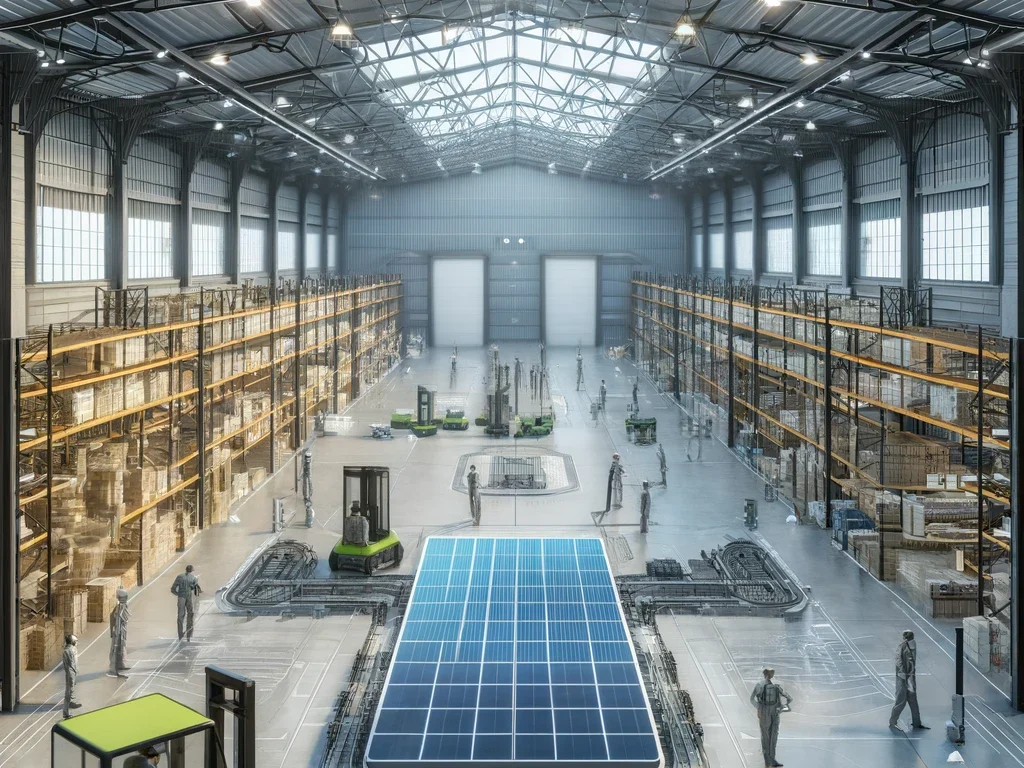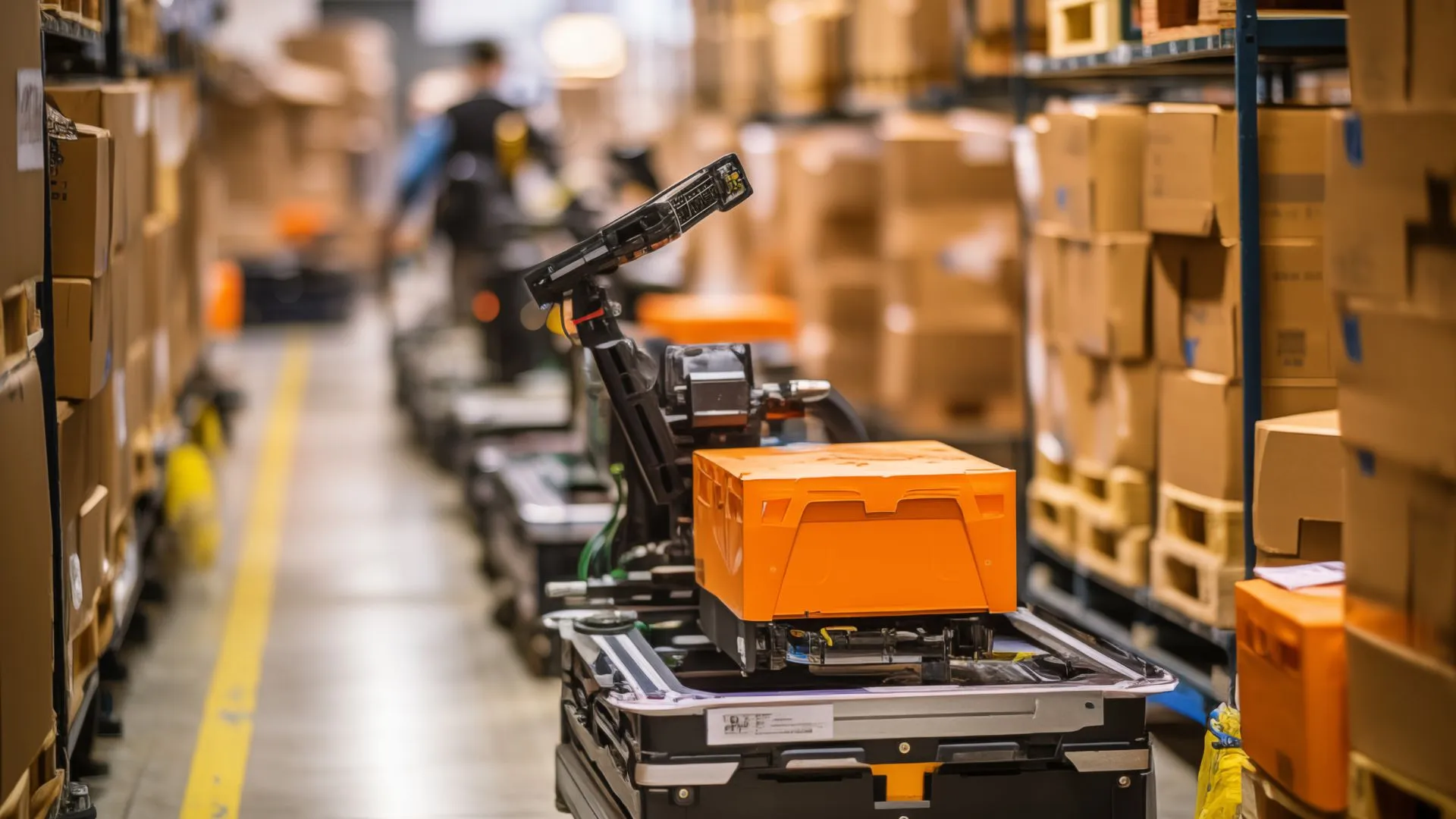Leveraging 3D simulation in warehouse optimization and automation for sustainability and Industry 5.0

Moving from the Industry 4.0 to the Industry 5.0 revolution transcends manufacturing and logistics to a completely different pardigm: integration with new advanced digital technologies to become more effective, sustainable and, above all, human-centered systems.
This evolution sees 3D simulation as a pivotal tool in the sustainable evolution of warehouse automation, particularly in the context of Industry 5.0 warehouse operations. It helps reduce waste, lower expenses and smooth the digital transition so that both employers and employees can profit from it.
The role of 3D simulation in optimizing warehouse operations
3D simulation in warehouse settings primarily focuses on optimizing layouts, streamlining operations, and predicting system performance under various scenarios. By creating virtual models of warehouse setups, businesses can test different configurations to find the most efficient arrangement of equipment and storage solutions. This proactive approach minimizes the need for physical prototypes and trial-and-error testing, significantly cutting down on waste and associated costs.
Sustainability through strategic design and resource management
One of the greatest benefits of using 3D simulations is the visualization and optimal utilization of energy efficiency in warehouse operation. For example, simulations can be of use in optimizing the placement of solar panels on the building’s rooftop or even designing a natural ventilation system with minimum demands on artificial cooling. The 3D simulation further reduces energy and machinery wear by optimizing routing and loading for AGVs and robots, respectively, consequently offering equipment life.
Expanding on these applications, 3D simulations also offer several other advantages:
- Safety enhancements: By simulating different emergency scenarios, such as fires or equipment failures, simulations help in designing safer evacuation routes and safety measures, which in turn minimize potential risks to human operators.
- Workflow optimization: Detailed simulations allow managers to see how new workflows might interact with existing processes. This is particularly useful for integrating IoT devices and automated systems, ensuring they enhance productivity without disrupting ongoing operations.
- Inventory management: Simulations can predict how changes in inventory levels affect space utilization and accessibility. This foresight helps in maintaining optimal inventory levels, preventing both overstock and stockouts.
Each of these applications of 3D simulation plays a crucial role in making warehouses more efficient, adaptable, and aligned with the sustainability goals of modern industry.
The strategic value of 3D simulation in automated warehouse forecasting
3D simulation offers a powerful means to predict the behaviors, durability, sustainability, and operational performance of automated warehouses. This technology enables businesses to foresee how automation systems will perform over their lifecycles, identifying potential challenges and optimization opportunities before physical implementation. Durability forecasts help choose robust materials and constructions that last longer and perform better. In terms of sustainability, simulations can evaluate the environmental impact of various configurations, optimizing energy use and reducing carbon footprints.
Performance analysis is particularly crucial as it determines the most efficient ways to move goods, ensuring operations are not only fast but also sustainable. Through such predictive capabilities, businesses can maintain competitive operations and adapt seamlessly to future technological advancements in warehouse management.
Enhanced decision-making and predictive maintenance
The predictive capabilities of 3D simulations enable the warehouse operators to foresee and avoid possible disruptions before they occur. With such foresight, downtime and maintenance costs are significantly reduced, and hence, not only a cut in expenses but an associated reduction in environmental impact from repairs and replacements. Predictive maintenance ensures that equipment always works at its peak efficiency and hence saves excess power consumption of the resources.
Supporting employee well-being in Industry 5.0
With Industry 5.0, the focus shifts towards a more balanced collaboration between humans and machines, aiming to enhance rather than replace human labor. A significant contribution of 3D simulation is through safe and ergonomic work environment design. This technology helps in modeling human interaction with the machine to ensure that the automatons support the human worker without causing unnecessary psychological or physical stress. Employees who feel valued and know their work is meaningful are more productive and engaged, guaranteeing a better workplace culture that initiates change and innovation.
Incorporating 3D simulation into warehouse management not only resonates with the principles of Industry 5.0 but also fosters sustainability through low waste and high efficiency. As industrial evolution continues, such technologies will be key in transitioning towards smarter and more sustainable operations that do not only prioritize the progression of technologies but rather the human factor.

Contact Flexcon: discover how to test and refine your real production strategies in a virtual environment.